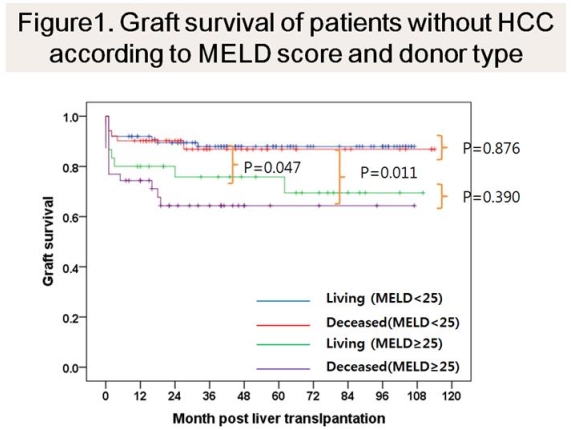

LT recipients without a reported MELD i within 30 days preceding LT were excluded. All LT recipients had a calculated or laboratory MELD score ≥ 15 at the time of LT surgery. We utilized an objective parameter, the D-MELD which is the absolute difference in recipient MELD score at the time of LT surgery and lowest MELD score (MELD i) tested and reported during the 30 days prior to LT surgery.
MELD LIVER TRANSPLANT SERIAL
Using serial MELD scores reported within the OPTN/UNOS registry, we analyzed post-LT mortality among adult (age ≥ 18) LT recipients from Januto Decemwho experienced a sudden pre-operative rise in their MELD score prior to LT surgery. This study was exempt from Institutional Review Board (Stanford University Research Compliance Office) review at our institution, as the data set used in the analysis was completely de-identified.

All patient and transplant center identifiers were excluded. Our study used data from OPTN/UNOS registry, which includes national data on all organ donations, waitlist registrants and LT recipients in the US. We studied Delta-MELD (D-MELD) defined as recipient MELD score at the time of LT surgery minus lowest MELD score within the preceding 30 days. Utilizing the serial laboratory MELD scores from the OPTN/UNOS database, we aim to assess in a standardized manner the impact of sudden rise in recipient MELD score prior to LT surgery on early post-transplant mortality. However, the relationship between sudden changes in MELD score immediately prior to LT surgery and outcomes was not examined. demonstrated that patients with a rise in MELD score of >10 over their time on the waitlist tended to experience worse 1-, 3-, and 5-year post-LT survival 11, which was later replicated in a large Eurotransplant registry analysis 12. In a single center analysis, Gyori et al. Another study analyzing 69,643 waitlist registrants found that a rise in MELD score of >30% during a seven-day period was associated with an increase in waitlist mortality but lacked association with post-LT mortality 16. in 2004 reported that a preoperative rise in MELD score of ≥5 within 30 days of liver transplantation was not predictive of post-LT survival 14. Using the Organ Procurement Transplant Network/United Network for Organ Sharing (OPTN/UNOS) registry, Northup et al. ACLF often impacts the Model for End-Stage Liver Disease (MELD) score, a validated objective predictor for early pre-LT mortality and the primary allocation criteria for liver transplantation in the United States (US) 6, 7, 8.Īlthough a ≥5 points rise in MELD score over 30 days in the setting of ACLF has been shown to predict pre-LT waitlist mortality 9, 10, the data are conflicting in terms of post-LT survival, in part due to widely varying time frames that have been evaluated 9, 11, 12, 13, 14, 15. In patients with liver failure in the setting of cirrhosis, acute-on-chronic liver failure (ACLF) is a clinical entity characterized by sudden onset and rapid progression of underlying hepatic dysfunction which may be accompanied by multi-system organ failure with high risk of short-term mortality (50–90%) without prompt supportive measures and liver transplant (LT) surgery 1, 2, 3, 4, 5. The increased risk of pre-LT mortality associated with severity of clinical decompensation assessed by the magnitude of pre-operative D-MELD persists in the early post-LT period. Moreover, pre-operative D-MELD > 10 was associated with nearly a two-fold increased risk for 30-day post-LT mortality (adjusted HR, 1.89, 95% CI: 1.30–2.77) compared to D-MELD 0–4. One-point incremental increase in pre-operative D-MELD (adjusted HR, 1.07, 95% CI: 1.04–1.10) was associated with higher 30-day post-LT mortality. Impact of D-MELD as a continuous and categorical variable (D-MELD 0–4, 5–10, >10) on early, 30-day post-LT mortality was assessed. Delta-MELD (D-MELD) was defined as recipient MELD score at LT minus lowest MELD score within the preceding 30 days.
Using the serial Model for End-Stage Liver Disease (MELD) scores recorded in the United Network for Organ Sharing national registry (2010–2017), we analyzed post-LT mortality among adult LT recipients based on the degree of fluctuation in MELD score during the 30-day period prior to LT surgery. Clinical decompensation immediately prior to liver transplantation may affect post-liver transplant (LT) outcomes.


 0 kommentar(er)
0 kommentar(er)
